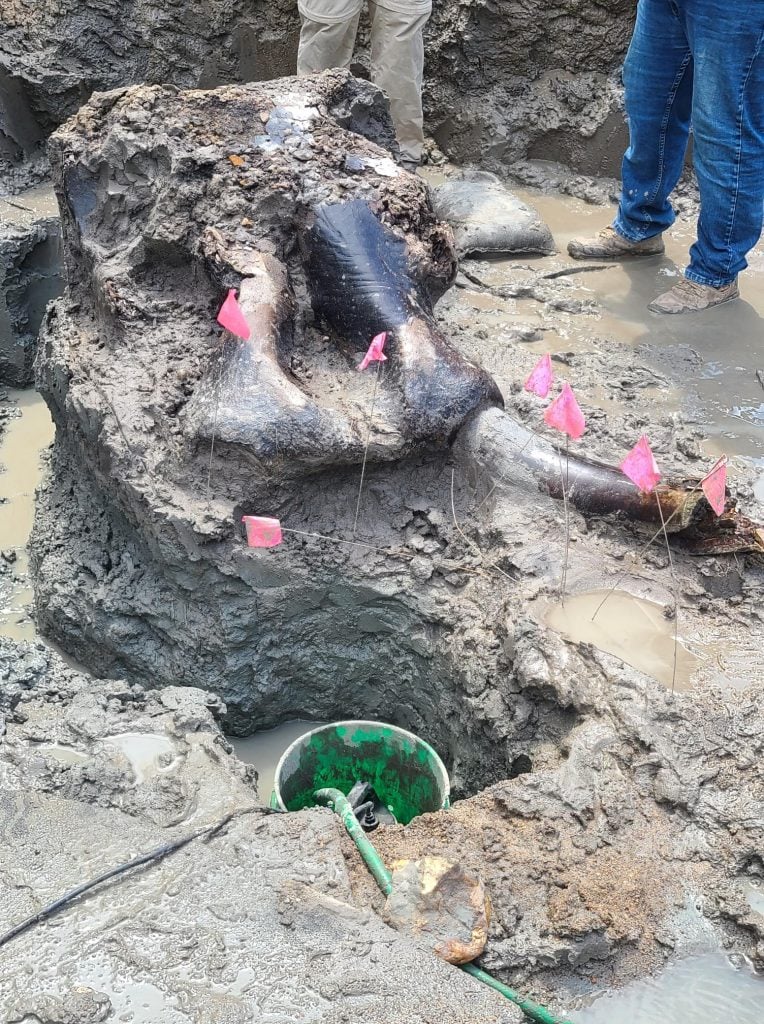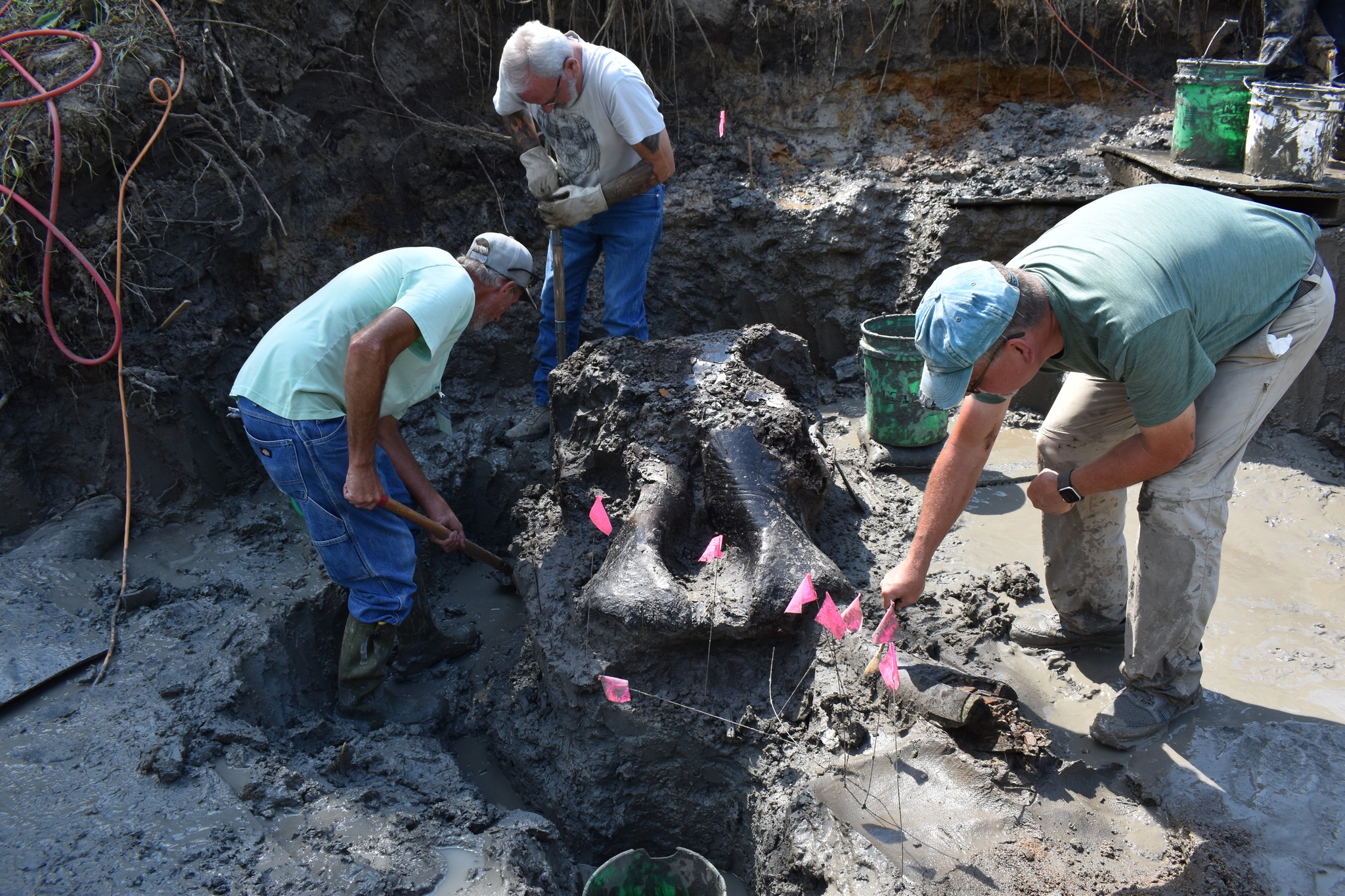At the end of the last Ice Age, a land bridge emerged between Siberia and North America offering wandering humans an easier route than their seafaring predecessors. In time, they spread out, carrying tools, technology, and culture southward and across the continent’s great plains.
They were nomadic peoples who foraged for berries, nuts, and tubers and hunted giant armadillos, mammoths, and mastodons—such as the one that has just been excavated in southern Iowa. Mastodons were large elephantine mammals endemic to North America that went extinct around 13,000 years ago, likely due to climatic changes and human hunting.
It’s the first time a well-preserved mastodon skeleton has been discovered in the Midwestern state, an excavation that has been 18 months in the making. It started in late 2022, when John Doershuk, Director at Iowa’s Office of the State Archaeologist, received photographs that seemed to show the femur bone of a giant prehistoric animal.
The restored creek bank after the excavation. Photo courtesy Iowa Archeology.
In 2023, Doershuk travelled to Wayne County, on Iowa’s southern border with Missouri, and met with the landowner to survey the discovery and collect a sample for radiocarbon dating. Soon, Doershuk was able to confirm what the onsite tusk, crania, and bones strongly suggested: it was indeed a mastodon and could be dated to around 13,600 years ago.
What came next was a multi-pronged communal effort. The nearby Prairie Trails Museum in Corydon, Iowa, secured grants and private donations, the landowner offered up the use of heavy machinery, and community members were enlisted as volunteers. Then, over the course of 12 days this summer, Doershuk and his team successfully excavated the remains of the mastodon that was awkwardly located in a creek cutbank 25 feet below the nearest access point.

Mastodon skull and tusk in the creek. Photo courtesy Iowa Archeology.
“Some of the bones are in an excellent state of preservation, others in poor shape, so extraction required plaster casts to protect the bones from falling apart,” Doershuk said via email, noting that despite the extreme heat with temperatures reaching 113 degrees, the stretch of dry weather aided the dig. A thunderstorm could have endangered the process.
Next, the mastodon will be cleaned and consolidated with missing portions of its face filled in with 3D-printed bones ahead of a plan to exhibit it at the Prairie Trails Museum. Through further tests, the team hopes to learn about its diet and, by extension, the environment in which it lived.

The team at work excavating the mastodon in the creek. Photo courtesy Iowa Archeology.
One tantalizing question surrounds whether or not the earliest humans already on the continent might have had contact with this mastodon. “It is likely they witnessed mastodons firsthand and may even have been involved in interacting with this particular animal, perhaps as hunters or scavengers,” Doershuk said. The hope is to find human-made cut marks, or even tool fragments embedded in bone or recovered in the surrounding sediments.
“If we can demonstrate a human connection,” Doershuk said, “it will be a first for Iowa and a significant contribution to the archaeological understanding of the region.”
Follow Artnet News on Facebook:



